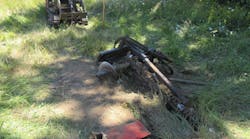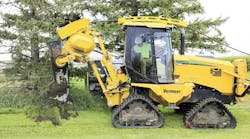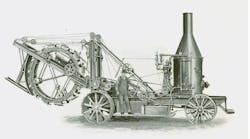For shear size and complexity, this was by far the biggest and most interesting trench shielding job I have ever been a part of, and I've been working with trench shield systems for over 25 years," said Gary Carlson, president of Gary Carlson Equipment of Blaine, Minn., the PRO-TEC shielding and shoring distributor for the state of Minnesota.
The trench shielding job Gary Carlson talked about was a Slide Rail System he and his staff designed and installed. It was used in an excavation opened to accommodate the installation of twin 900-foot-long pipelines during construction of a new power plant in St. Paul. The dual 84-inch concrete encased steel pipes came in 25-foot lengths, which were welded together inside and outside. The slide rail shoring system was 130 feet long, 25 feet wide and 16 feet deep.
The new power plant is being built along St. Paul's riverfront by XCEL Energy, the Denver, Colo., based electric power utility. The new plant will be natural gas fueled and will replace the 83-year-old High Bridge coal-fired plant. The plant is due to be fully operational sometime during 2007. The combined cycle plant produces electricity from two sources of energy. Natural gas is used as a fuel in a combustion turbine, similar to a jet engine. Then the exhaust gas from the turbine is used to make steam in a heat recovery steam generator. The combined cycle is about 30-percent more efficient than a traditional steam plant. The MERP plant is one of the largest construction projects in the upper Midwest this year.
XCEL initially envisioned the 16-foot-deep, 25-foot-wide excavation to be completely walled off by tight steel sheeting supported by huge waler beams and spreaders, a time- and labor-intensive and therefore costly method.
Carlson's crew had a better idea.
Working with XCEL's Mike Bergquist and Scott Eddy, the Carlson firm submitted an alternative that met all criteria: worker safety, ease and speed of installation, maximum pipe length allowance, and enough work space to allow pipe welding and grouting for both lines side by side. The Slide Rail System was an integral facet in the installation of the twin 900-foot-long, 84-inch-diameter water intake and outflow pipes. Room to work was a problem. Outside diameter of each pipe was 88 inches with 5 feet of space between the twin lines. The excavation for the twin pipes had to be installed in tight quarters, a right of way barely 30 feet wide sandwiched between a river floodwall and a concrete paved street.
Carlson's design involved a Slide Rail System consisting of 24-foot-long by 8-foot-high panels that were stacked to achieve the 16-foot depth and 25-foot spreaders positioned between custom-designed 27-foot-long vertical spreader posts. This system eliminated the need for huge walers or sacrificial beams (suggest by other plans), that alone saved an estimated $115,000.
With the Slide Rail System, as each 25-foot pipe section is welded, grouted and tested, that portion is backfilled and compacted and the panels and spreaders are moved by the CAT 345 excavator to the front of the trench and reinstalled by a small crew. Because the system worked so efficiently, installation rates have exceeded initial estimates. The crew averaged 25 feet of twin pipe per day. Instead of the six-month timeframe originally estimated, the job was completed in just over four months.




